On March 21, 1961, Santa Clara University President Fr. Patrick Donohoe announced that SCU would be breaking its 110 year tradition by allowing women to enroll as full time students. Fr. Donohoe supported his decision by explaining how college institutions across America were now accepting female applicants, and he thought it be best for SCU to follow the trend.
There is no virtue in age, or tradition itself… Catholic lives involve two sexes
Fr. Donohue, 1961
Of course, breaking tradition would not be easily accepted by all members of the SCU community, as many complained that allowing women to attend the university would disrupt the Jesuit values and traditions the all-male institution was founded on. A male student argued, “Personally I don’t like it at all. I think it will detract from the spirit of the school, from the Santa Clara image. Tradition is important here and I think the reason that most of the fellows came here was the tradition of Santa Clara spirit. This tradition will be destroyed now” (“Student Leaders Divided on Arrival of ‘Bronkettes’,” The Santa Clara).
However, Fr. Donohoe disagreed with this belief and stated, “There is no virtue in age, or tradition itself. There is no virtue in an exclusive school for men for that reason. Catholic lives involve two sexes” (“Big Move Explained,” The Santa Clara). Also, opening up the school to women would increase the number of students overall, which was an undeniable economic benefit for the university considering that the College of Arts and Sciences was desperately looking for more admissions (O Pioneers!, Santa Clara Magazine).
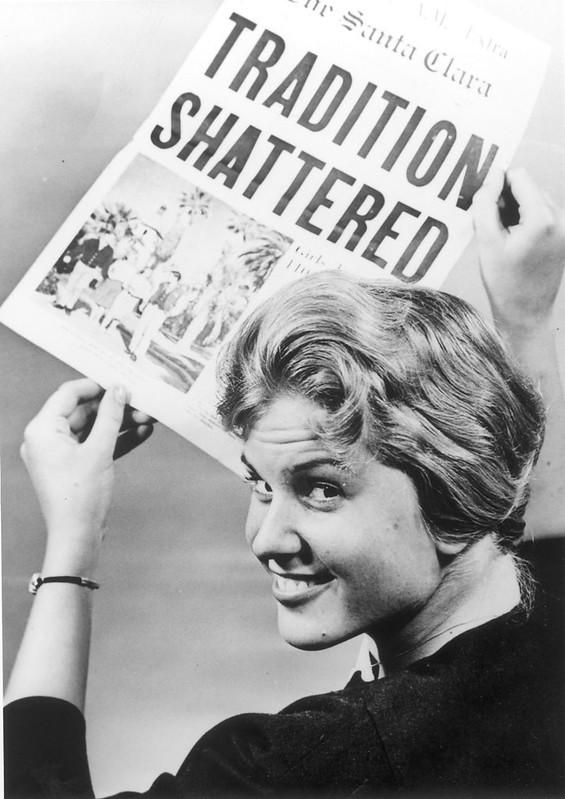
Although local women and parents were excited to hear this news, the first year of co-ed admissions would only yield 100 female students, which was heavily outnumbered by the 1114 male students (7RS Box 28: Women Stats 1961-1978). This number did not alarm Fr. Donohoe and other faculty members since they did not expect an immediate influx of female applicants (7RS Box 28: Press Release March 21, 1961). Still, a number of alumni were excited to hear that the university was going forward with its integration as many saw the change was necessary. Richard Lautze ’39 proclaimed, “I am very happy, I have four daughters” (“Lautze ‘Very Happy’ Over Girls At SC,” Santa Clara student newspaper).

As the freshly admitted women, who were referred to as co-eds, stepped on campus, it was clear that not everyone was willing to give them a warm welcome. Gracie (Byrnes) Mulcrevy ’65 recalled encountering SCU football players with her friends, who teased them by saying, “Co-eds, go home!” (“Tradition Shattered,” Santa Clara Magazine). A number of women from the first cohort of co-ed admissions expressed how nerve-wracking it was to walk into crowded spaces, as they would have to face the stares of their male counterparts. One co-ed called this phenomenon a “kangaroo court,” where the boys would sit themselves in the cafeteria just to watch and intimidate the new female students (7RS Box 28: The First Coeds Reunion Survey). However, the co-eds knew that breaking tradition wouldn’t be easy and didn’t back down from the hecklers they faced. During reminisces, Mary Somers Edmund ’62, the first woman to graduate from SCU, recalled how a group of male students pooled together their money and offered her $250 to not walk on stage with them during graduation. Edmund explained how she turned down the offer, “I worked too hard for this, I didn’t realize the significance of being the first woman to graduate until later” (“Tradition Shattered,” Santa Clara Magazine).
The co-eds also faced stringent rules when living at Park Lanai, the female dormitory. There were strict curfews put in place, where the women had to be in the villas by 9pm on the weekdays and could only leave to go to the library (7RS Box 28: The First Coeds Reunion Survey). The women were also not allowed to wear slacks and shorts, and if they were caught doing so, their parents would be notified (7RS Box 28: House Rules and Regulations for Women Students Living at Park Lanai). Of course, as these women broke tradition, breaking the rules also seemed to be easy. When recalling their time at SCU, many of the women found it amusing that a number of them would sneak out of their dorm rooms on a regular basis. One notorious incident was when the co-eds were found attending a motel party put on by male students, which led to them being “grounded” for a month (“Tradition Shattered,” Santa Clara Magazine). The co-eds also heavily disagreed with the no slacks and shorts rule, and as a secret act of rebellion, a number of them would wear raincoats over their clothes in order to hide their shorts (“Tradition Shattered,” Santa Clara Magazine).
Courtesy of Archives & Special Collections
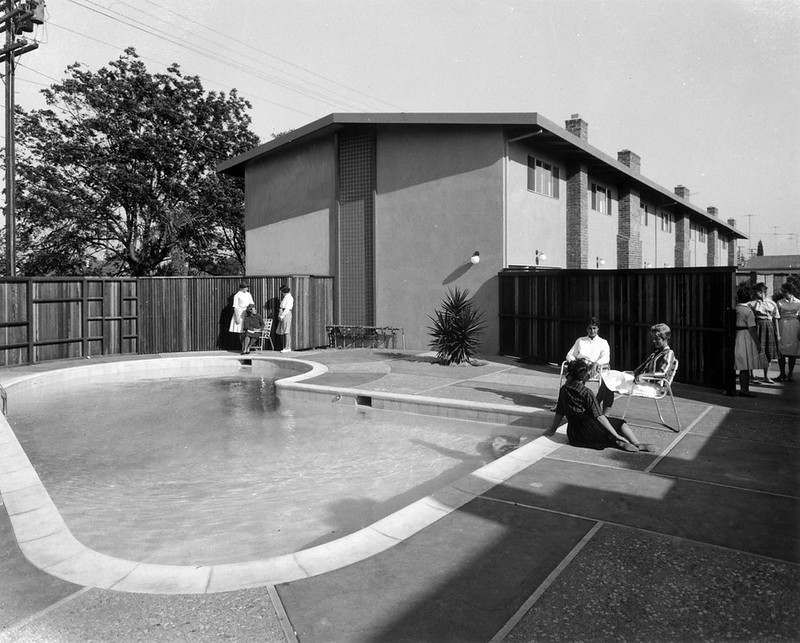
Pool at the Park Lanai Apartments 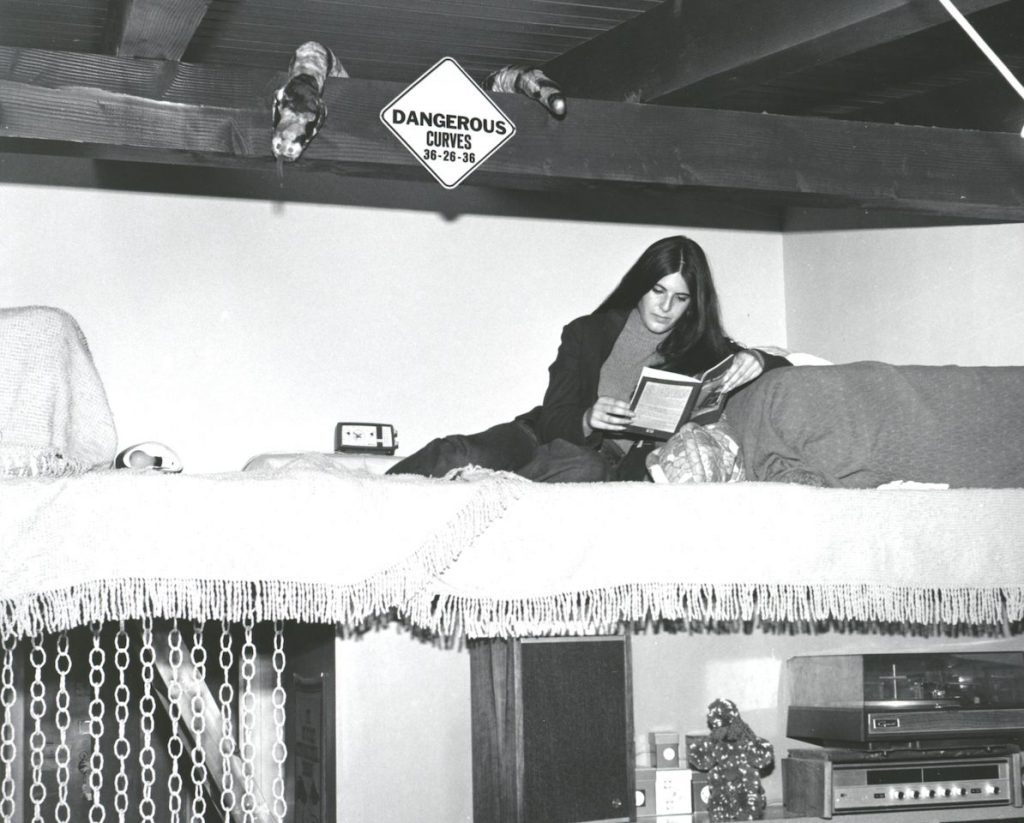
Student reading in her dorm room
Since their time at SCU, the co-eds have gone on to reach success on various avenues. These women have become department heads, corporate executives, mothers, lawyers, actresses, artists, and other professions. A short list of some of the women’s biographies can be found on the SCU alumni website (the biographies are towards the bottom of the article).
One woman in particular we’d like to highlight is Roseanna Torretto ’65, who was a part of the first cohort of women to attend SCU in 1961, and would go on to graduate after four years. Torretto applied for a degree in Mathematics, and at the time of admission, she would make up one of the twelve female students in the Sciences department (7RS Box 28: Women Stats 1961-1978). Even as a high school student at Notre Dame San Jose, her teachers noticed that she had a talent for math and sciences, and due to the Space Race between the U.S and Soviet Union at the time, schools were emboldened to heavily support STEM fields. After graduating SCU, Torretto would continue her education and receive a Masters degree at UC Davis, and would eventually become a computer capacity analyst for the state of California. Outside of her career, Torretto has been a member of the League of Women Voters since 1973 and is the former president of the board for Camellia Symphony Orchestra. Torretto, like many of the co-eds at SCU, showed us that despite working in male dominated fields, women are just as capable as their male counterparts.
Being one of the first coeds made me very comfortable with competition.
– Brenna Bolger (“Tradition Shattered,” Santa Clara Magazine).
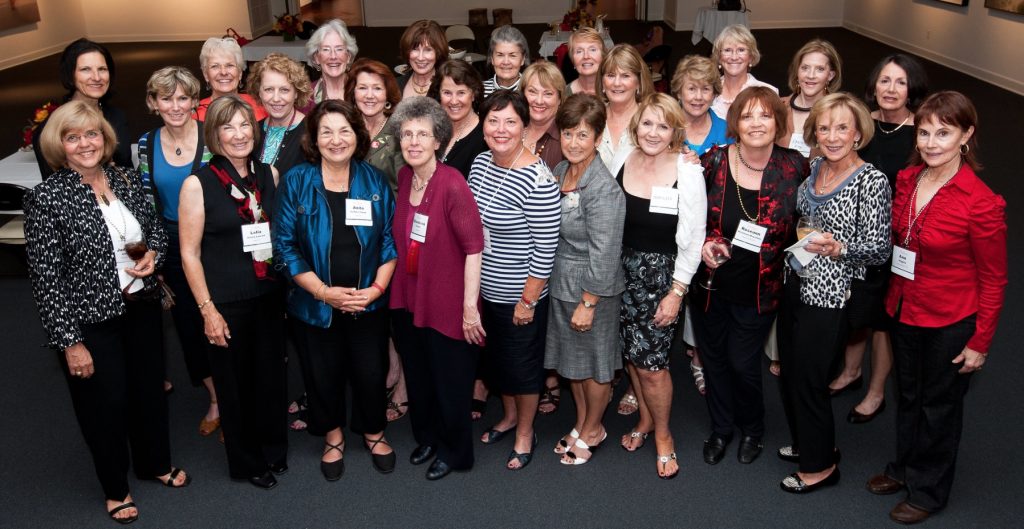
Since Fr. Donohoe’s initial announcement in 1961, the amount of female students at SCU has steadily increased over the decades, reaching 1544 women in attendance by 1978 (7RS Box 28: Women Stats 1961-1978). Today, the student gender ratio at SCU is about 1:1 of the 8,669 enrolled in the 2020-2021 school year (“Student Body,” 2020-2021 Undergraduate Bulletin). Furthermore, the term co-ed is rarely used nowadays.
As a female student myself, I’ve never been referred to as a “co-ed,” but instead I’m seen as just a regular student. But in learning so much about the trailblazing women in 1961, it’s clear that my status didn’t come easily. As we celebrate the 60th anniversary of their admittance, which coincidentally falls on the same month as Women’s History Month, I’d like to extend my thanks to these women for being the first to enter SCU as full time undergraduate students. In the process of breaking a 110 year tradition, they’ve created a path that allows me and other women to attend and excel at SCU.
A special thank you to Kathy Kale ’86, the first female Executive Director of the Alumni Association, for providing us with a timeline of women at SCU and the Women at SCU Flickr collection link, as well as introducing us to Roseanna Torretto’s story.
Header Image: “First undergraduate women register at Santa Clara, Sept. 11, 1961. Patrick Twomey ’64 aids three freshmen, left to right, Linda Biber ’65, Kathleen Regan ’65, and Mary Sue Jertson ’65” from the San Francisco Public Library [link leads to Alumni Association Flickr page]



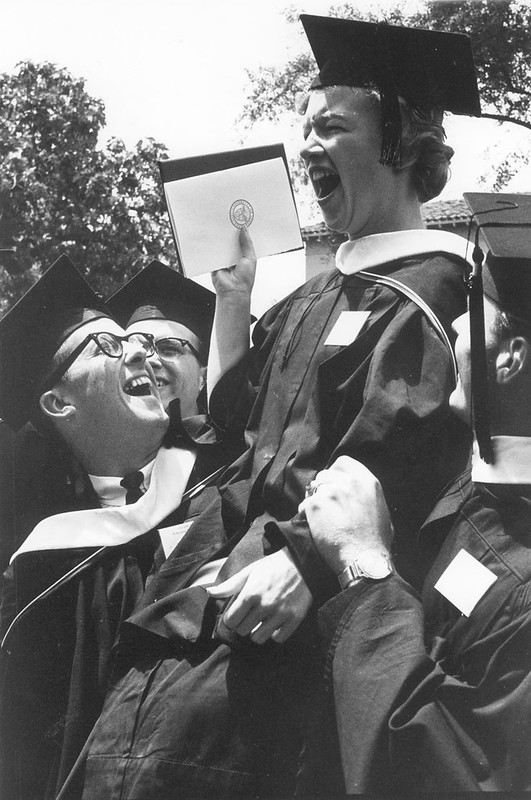
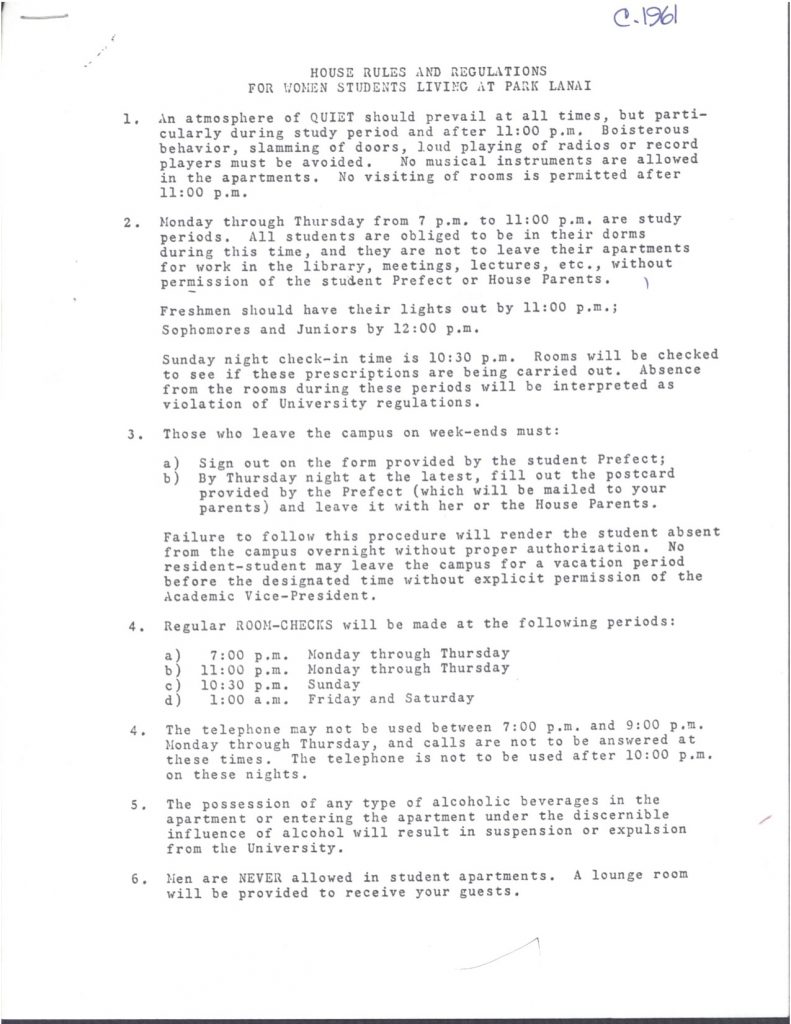
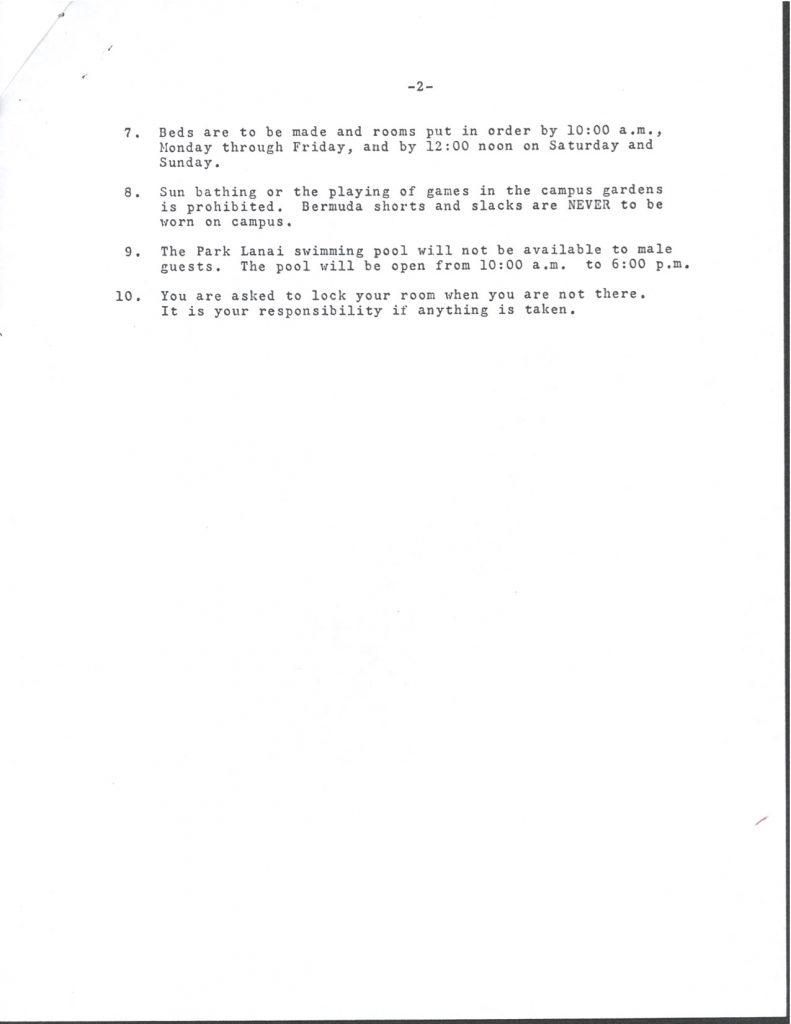
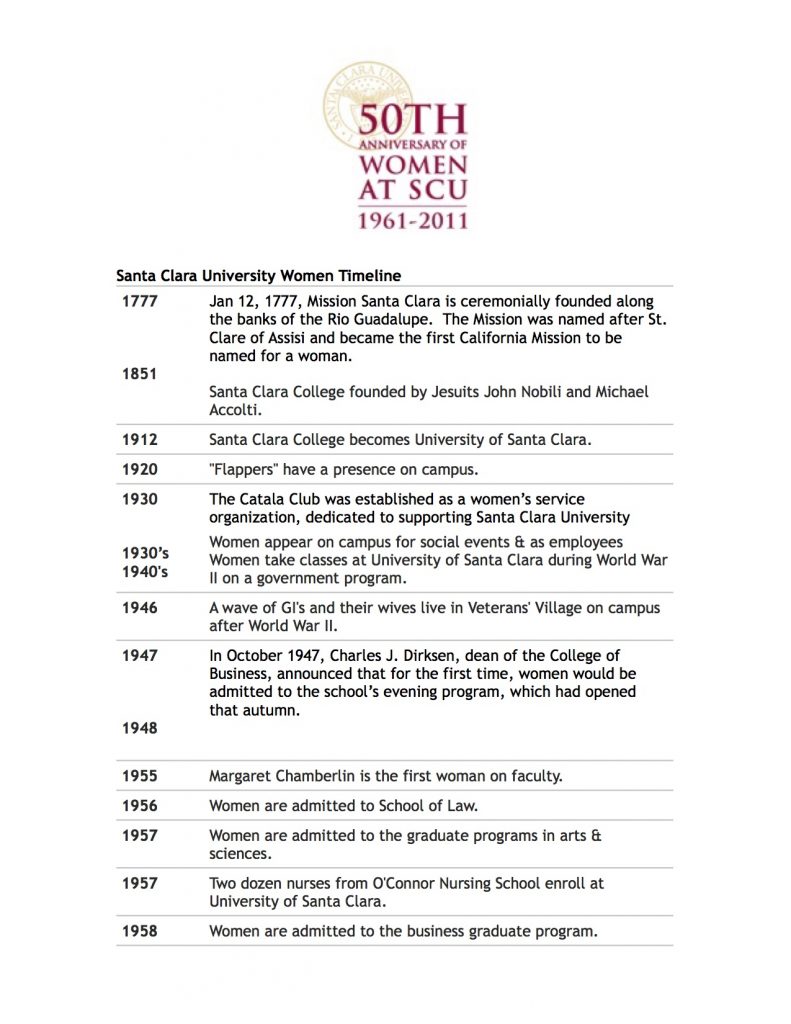
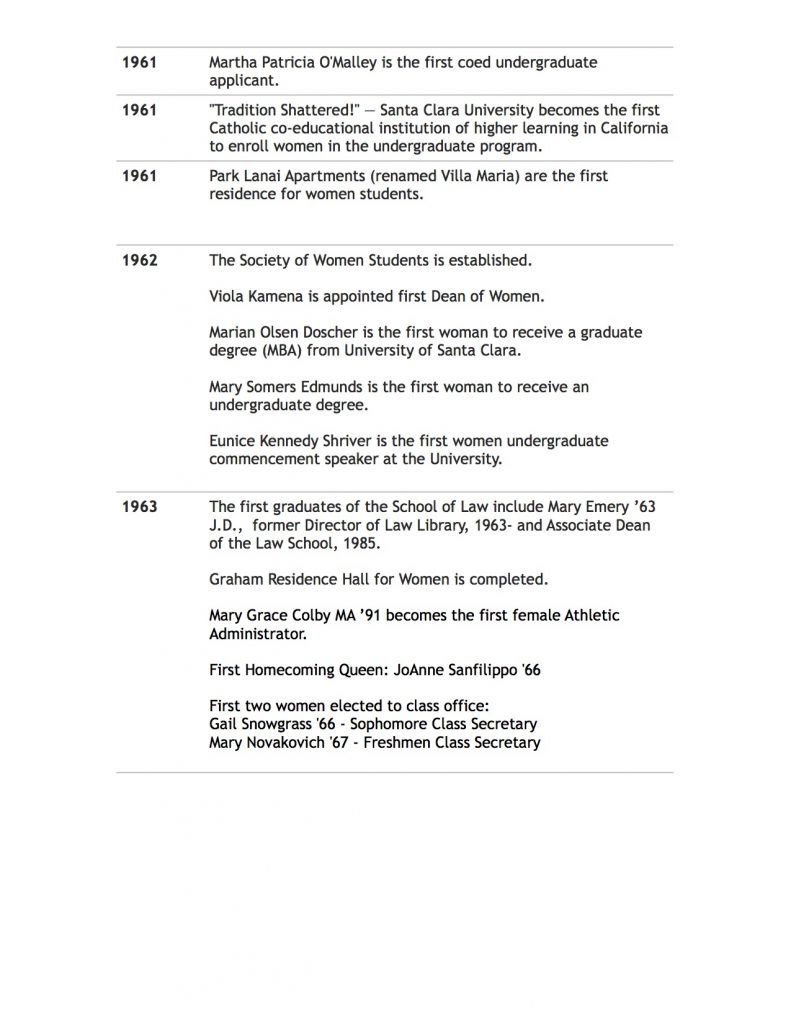
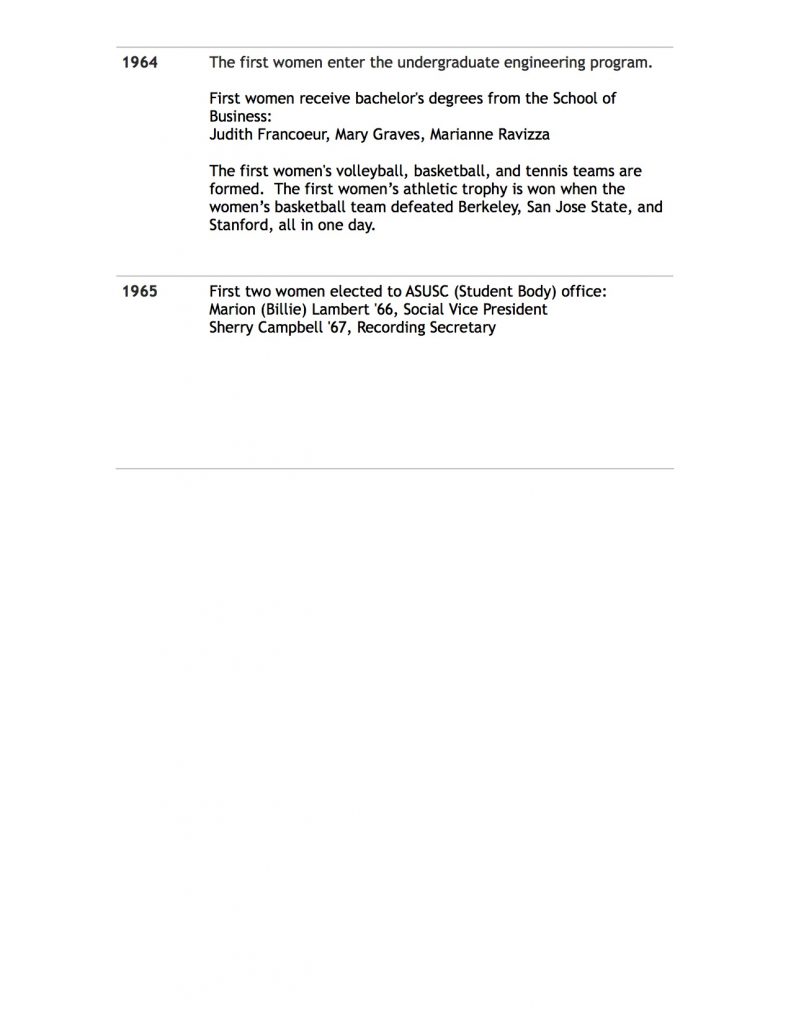
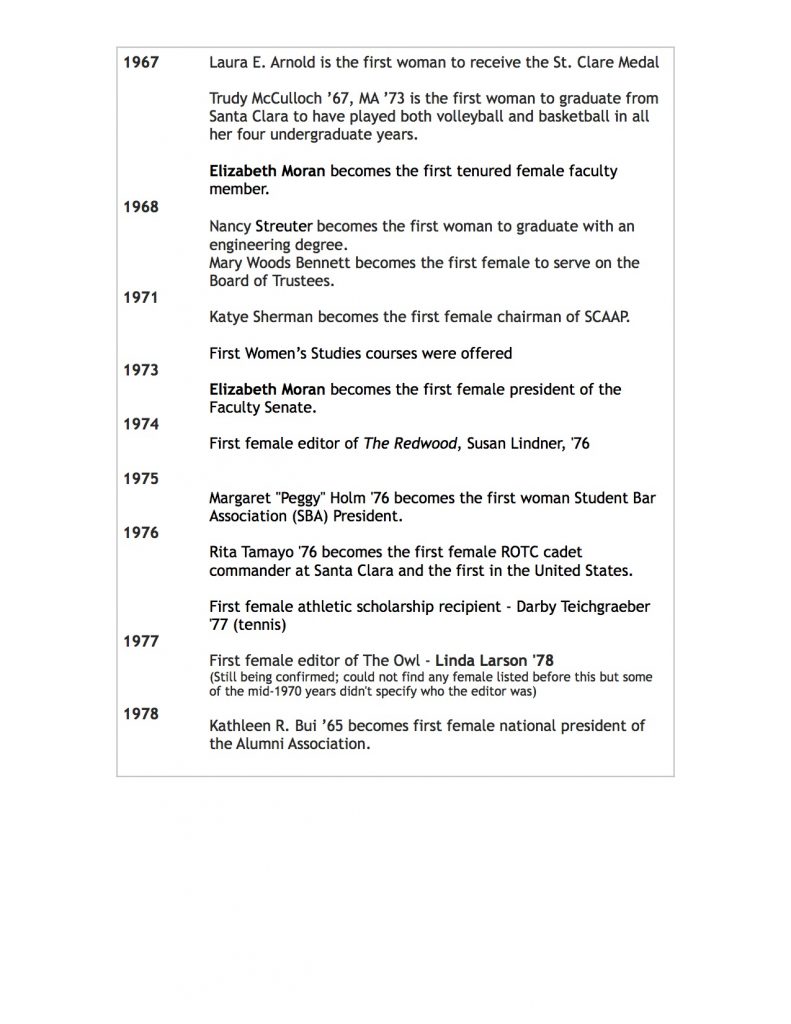
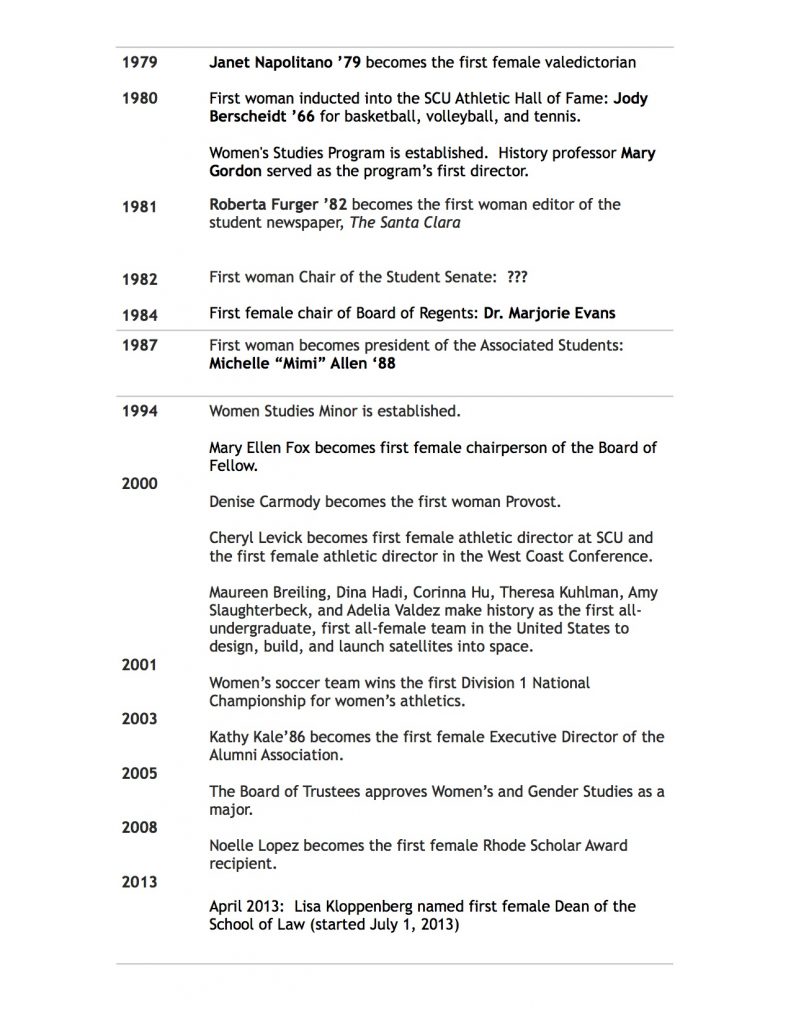

Loved seeing pictures of the women I graduated with in ’65! Being on the East Coast, I haven’t been to but a couple of reunions, but it’s great that so many women from our era went on to such wonderful lives and to this day appreciate our Jesuit education. If any SCU grad is in the Washington, DC area, I would love to take you to lunch ( or whatever) & hear your thoughts re your SCU experience.